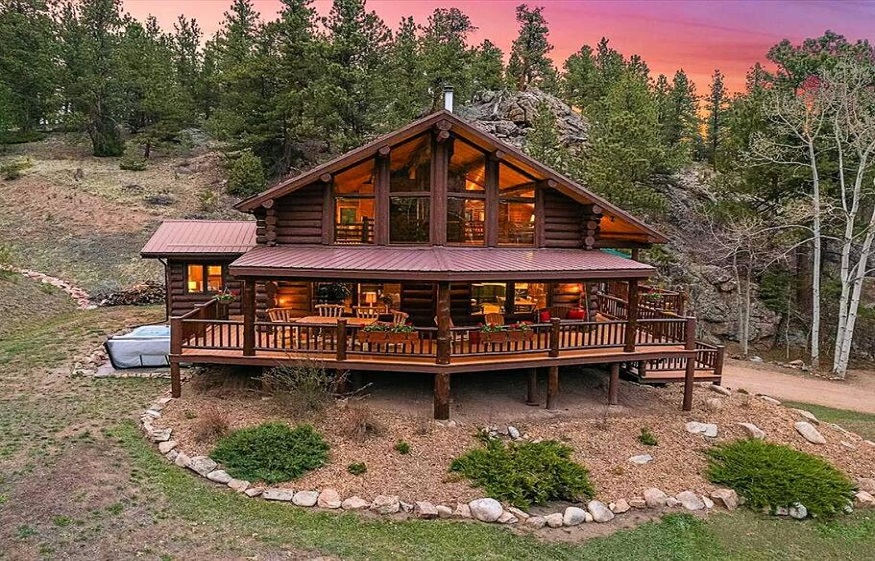
How to Turn Your Log Cabin Into a Profitable Holiday Rental
As demand for unique staycations continues to rise across the UK, more property owners are discovering the potential of turning log cabins into profitable holiday rentals. Whether your cabin is nestled in a rural corner of the Lake District or sitting at the bottom of your garden, it could become a steady source of income with the right approach.
With their rustic charm and immersive natural settings, log cabins offer something different from hotels and traditional B&Bs. For travellers seeking peace, authenticity, and an off-grid experience, they tick all the boxes.
If you’re considering stepping into the holiday let market, here’s how to turn your log cabin into a successful and appealing short-term rental.
1. Know Your Legal and Planning Requirements
Before welcoming your first guests, it’s essential to ensure you have the right permissions in place.
In the UK, planning permission may be required if you’re converting a structure into a holiday rental or using a cabin as a permanent residence. For cabins in gardens, if they’re self-contained and used as commercial accommodation, they may fall outside the limits of permitted development.
You should also:
- Register with HMRC if you’re earning income from holiday lets.
- Obtain the appropriate holiday rental insurance.
- Follow fire safety regulations (including installing smoke alarms, fire extinguishers, and an escape plan).
If in doubt, speak with your local authority or a planning consultant.
2. Create a Space Guests Will Love
Holidaymakers expect comfort, cleanliness, and thoughtful touches. Even if your log cabin is small or rustic, a few key upgrades can dramatically improve the guest experience:
- Comfortable bedding: Invest in a quality mattress and soft linens.
- Heating: Ensure the cabin stays warm year-round with electric heaters or a wood-burning stove.
- Functional kitchen or kitchenette: Guests love to self-cater, so include at least a hob, fridge, kettle, and utensils.
- Wi-Fi (if possible): While some guests love to unplug, reliable internet is still a bonus—especially for remote working.
- Outdoor space: A fire pit, BBQ area, or small deck adds extra appeal.
Keep the décor natural, uncluttered, and aligned with the cabin’s character. Use soft lighting, wooden textures, and earthy colours to create a welcoming atmosphere.
3. Take High-Quality Photos
Your listing photos are your shop window. They should reflect not only the cabin itself but the mood and experience it offers.
- Capture the exterior from various angles, including any garden or view.
- Show each room clearly, highlighting natural light and space.
- Include details like a crackling fire, steaming coffee mugs, or a sunset view—these small touches help guests imagine themselves there.
Hiring a professional photographer is a worthwhile investment and often pays for itself quickly through increased bookings.
4. Choose the Right Platform
There are several platforms available for listing your log cabin as a holiday let, each with its own advantages:
- Airbnb: Offers flexibility, good visibility, and an easy-to-use system.
- Vrbo (formerly HomeAway): Caters more to families and longer stays.
- Sykes Cottages or HolidayCottages.co.uk: UK-specific platforms with a focus on rural and luxury stays.
You can also build your own booking website if you prefer full control and want to reduce commission fees over time.
5. Craft a Compelling Listing
Your listing description should highlight the unique aspects of your log cabin and help potential guests picture their stay.
- Mention key features like wood burners, outdoor baths, forest walks, or wildlife sightings.
- Emphasise local attractions—whether it’s walking trails, nearby villages, or local food markets.
- Set expectations clearly: If your cabin is off-grid, rustic, or has limited Wi-Fi, mention it—but frame it as part of the experience.
Tone matters too—be warm, welcoming, and concise.
6. Deliver an Excellent Guest Experience
Happy guests leave glowing reviews—and reviews drive bookings. Focus on making your guests feel looked after from start to finish.
- Send clear directions and check-in instructions.
- Leave a welcome pack with tea, coffee, and local treats.
- Provide helpful information about nearby walks, restaurants, and activities.
- Be responsive to messages or questions before and during their stay.
Little touches—like a handwritten welcome note or fresh flowers—often have a big impact.
7. Consider Seasonality and Pricing
Log cabins are popular year-round, but pricing should reflect demand. Use dynamic pricing tools or regularly review similar listings in your area to remain competitive.
- Offer discounts for longer stays or off-peak seasons.
- Highlight seasonal experiences, like autumn hikes or cosy winter escapes.
- Promote last-minute availability to fill unexpected gaps.
Turning a log cabin into a holiday rental is more than just a side hustle—it’s a chance to share a unique experience with others, all while earning a steady income. With careful planning, a welcoming space, and great guest service, your cabin can become a sought-after escape for UK travellers looking to slow down and reconnect with nature.





